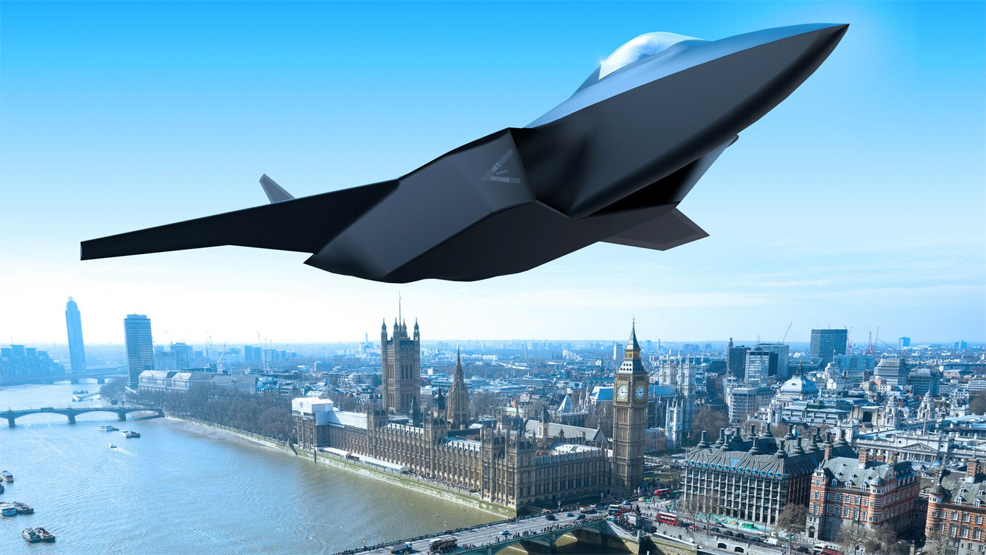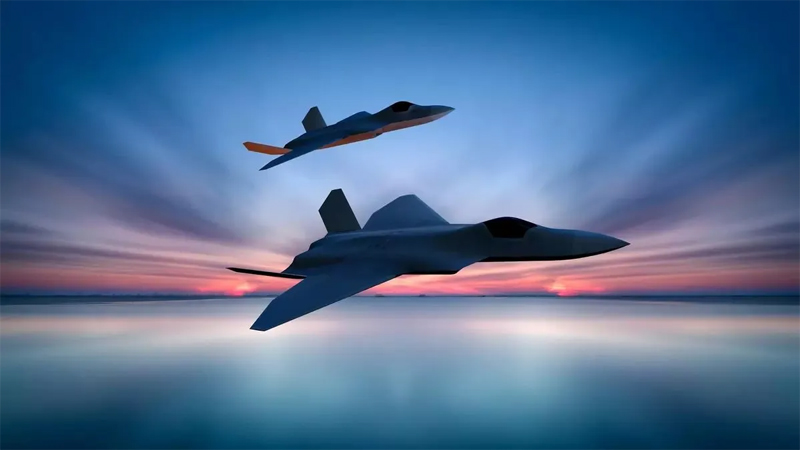
9th December 2022 Next-generation fighter jet planned for 2035 The UK government has announced it will collaborate with Italy and Japan to develop the Tempest, a new fighter jet to replace the Typhoon.
Prime Minister Rishi Sunak today visited a Royal Air Force (RAF) base to launch the first major phase of the Global Combat Air Programme (GCAP), a new international partnership between the UK, Japan, and Italy to deliver the next generation of combat air fighter jets. This aims to harness the combined expertise and strength of each countries' defence industries to push the boundaries of what has been achieved in aerospace engineering to date. The aging Eurofighter Typhoon – which had its first flight in 1994, before entering service in 2003 – will be succeeded by The Tempest, a sixth-generation jet planned for 2035. The new aircraft is likely to feature an array of capabilities such as uncrewed flight, advanced sensors, cutting-edge weapons, and innovative data systems. By combining forces with Italy and Japan, the UK aims to utilise their expertise, share costs, and ensure the RAF remains interoperable with its closest partners. The project is expected to create high-skilled jobs in all three countries, strengthening their industrial bases and driving innovation with benefits that go beyond pure military use. The Tempest will use a plethora of futuristic technologies including artificial intelligence, AR/VR interactive cockpit displays, haptic feedback, eye-tracking and gesture control, and the ability to guide a wing of several smaller robotic aircraft. Its flexible payload bay and other systems could allow directed energy weapons and hypersonic missiles, in addition to swarming technology assisted by machine learning.
The pilot's helmet will even monitor brain signals and other medical data, amassing a unique biometric and psychometric information database that will improve the more the pilot flies. The jet's AI will work in conjunction with the database to assist the pilot – for example, taking over the flight controls if he/she blacks out due to g-force, or increasing its own workload when the pilot is overwhelmed or under increased stress, e.g. taking over terminal guidance after weapon deployment if the pilot's attention is focused on a more imminent threat to the aircraft. The AI is also intended to function as a "gatekeeper" that will parse the overwhelming quantity of sensor and intelligence data collected by the aircraft to identify key threats, while throttling the rate processed data is provided to the pilot to prevent him/her being overloaded. The Tempest will maintain low observability at supersonic speeds. Its defensive aid system will track, target, and intercept incoming missiles. In addition, integrated effects will allow the aircraft to engage with a range of non-kinetic effectors, such as EW (Electronic Warfare) jamming and directed energy weapons. The aircraft's two generators are expected to provide 10 times more electrical power than the Typhoon's, while a new radar will be four times as accurate as existing sensors in a package only 1/10th the size. It is envisaged that the aircraft will incorporate automated support/maintenance on the ground, such as additive manufacturing, and collaborative robots. The UK, Italy and Japan will now work intensively to establish the core platform concept and set up the structures needed to deliver this massive defence project, ready to launch the development phase in 2025. The UK's BAE Systems (the largest defence contractor in Europe) will play a key role in developing the Tempest. Japan's Mitsubishi Heavy Industries and Italy's Leonardo are among the other companies involved. "We are one of the few countries in the world that has the capability to build a technologically advanced fighter aircraft," said Mr. Sunak. "The security of the United Kingdom, both today and for future generations, will always be of paramount importance to this Government. That's why we need to stay at the cutting-edge of advancements in defence technology – outpacing and out-manoeuvring those who seek to do us harm. "The international partnership we have announced today with Italy and Japan aims to do just that, underlining that the security of the Euro-Atlantic and Indo-Pacific regions are indivisible. The next-generation of combat aircraft we design will protect us and our allies around the world by harnessing the strength of our world-beating defence industry – creating jobs while saving lives." Last year, a report by PricewaterhouseCoopers suggested the UK taking a core role in a combat air system could support an average of 21,000 jobs a year and contribute an estimated £26.2bn to the economy by 2050.
Comments »
If you enjoyed this article, please consider sharing it:
|








